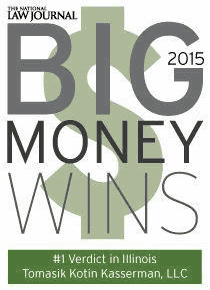Beware of the insurance implications if you are temporarily closing a business or suspending operations at a building in response to the COVID-19 pandemic
By: Timothy Tomasik and Edward J. Ozog
 When a business closes or downsizes in response to the Covid-19 pandemic a likely result is a vacant or unoccupied building. Few insureds understand that a condition in their property insurance policy may suspend coverage when the building is vacant or unoccupied. When coverage is suspended the insured cannot recover for a loss occurring after the building is either vacant or unoccupied, or both, after lapse of a specified number of days. This article discusses the issues arising when a insured stops utilizing its building for the purposes described to the insurer to obtain the property insurance, or otherwise leaves the building vacant.
When a business closes or downsizes in response to the Covid-19 pandemic a likely result is a vacant or unoccupied building. Few insureds understand that a condition in their property insurance policy may suspend coverage when the building is vacant or unoccupied. When coverage is suspended the insured cannot recover for a loss occurring after the building is either vacant or unoccupied, or both, after lapse of a specified number of days. This article discusses the issues arising when a insured stops utilizing its building for the purposes described to the insurer to obtain the property insurance, or otherwise leaves the building vacant.
The coverage condition for “vacancy or unoccupancy”
Since, the late 1940’s the standard fire insurance policy has included a condition that suspends coverage if the insured building is left vacant or unoccupied for a specified number of consecutive days. The typical policy condition states:
“CONDITIONS SUSPENDING OR RESTRICTING INSURANCE.
Unless otherwise provided in writing added hereto this Company shall not be liable for loss occurring:
…
(b) while a described building, whether intended for occupancy by owner or tenant, is vacant or unoccupied beyond a period of sixty consecutive days; …”
The above provision is known as a policy condition that suspends coverage if the described circumstances occur. After coverage is suspended an insured may not recover for an otherwise covered loss.
Modifications to the policy condition may change the “or” to “and”
Insurers may change the terms of an individual policy to require that the building be “vacant and unoccupied.” Courts examined the distinction between the use of the words “or” and “and” in the condition clause. The word “or” is a disjunctive therefore either vacancy or unoccupancy suspends coverage. In contrast, the use of the conjunction “and” requires both vacancy and unoccupancy to suspend coverage. The courts also agree that the terms “vacancy” and “unoccupancy” describe different circumstances or parameters. Accordingly, an insured should pay close attention to the policy condition provision to determine whether either one or both circumstances must exist to justify suspension of coverage. Commercial property forms have also been drafted to define “vacancy” and omit reference to occupancy to suspend coverage.
What is vacant and unoccupied
“Vacancy” means empty or devoid of goods and person property. “Unoccupancy” means the absence of the insured or other persons from the premises. What constitutes “occupied” may also include consideration of the insured’s representations to the insurer when procuring coverage about the intended use of the building. For example, occupancy of a structure insured for “like merchantile purposes” required a practical use of the premises in relation to the nature of the building. Generally, a building is considered “unoccupied” when operations or other activities in the building are suspended.
Occasional visits and inspection of the property by the insured was insufficient to prevent application of the policy condition. Whether the property is without furniture, bedding, stove, refrigerator, personal property and toilet facilities is relevant to determine vacancy. Coverage was suspended at a commercial office building even though the lessee claimed it was in the process of moving equipment into the premises where the building was vacant for 60 days and neither the insured nor its lessee were conducting customary operations at their respective tenancies that were also without electricity or water service.
What constitutes vacancy and unoccupancy has been the subject of repeated disputes. Where the undefined term “unoccupied” was used the provision barred coverage where no person was using the premises as a dwelling. A temporary absence from a home for a reasonable length of time did not render a home unoccupied. Notably, the condition was applied to bar coverage where no one was living at the premises on a regular basis despite visits to the property and the performance of maintenance at the building.
Vacancy and unoccupancy must continue for a consecutive specified time period
Another material consideration is the period that the property must be vacant or unoccupied before the suspension of coverage takes effect. In the above quoted policy condition, the language requires either vacancy or unoccupancy to exist for 60 consecutive days. The prescribed time period is set by the insurer, and periods such as 30 days, 90 days and 120 days are not uncommon. The time period is structured to allow for temporary closures that may be anticipated by both the insured and insurer when the policy is written. The insurer also determines the period based on an evaluation of proposed use of the building and expected risks in the event that the building is left unused. An insured engaged in a seasonal business should consider the impact of this condition and make proper arrangements to maintain coverage throughout the year.
The condition is valid and enforceable
The vacancy and unoccupancy condition is valid and enforceable to suspend coverage to an insured. Recovery for a fire loss was denied to an insured when a bar and restaurant closed and remained unused for 60 days because the property was considered vacant and unoccupied within the policy condition suspending coverage. Similarly, a liquor store left vacant for more than 60 days had no coverage after a fire loss. Also, a policy provision requiring an insured to reside at the property as a condition for coverage is enforceable.
Some reasons for the condition
It is established in the insurance business that the risk of loss due to fire, burglary, theft, vandalism, malicious mischief, and the like, increases when a building is vacant or unoccupied. The vacancy and unoccupancy exclusion protects the insurer against the increased risks described above. However, the clause will be given effect without regard to whether there has been any increase of risk or hazard. Notwithstanding, an abandoned, unguarded and open to trespass building constitutes an increase in hazard permitting an insurer to claim coverage was suspended under the “increase in hazard” condition. The increase in hazard condition frequently appears in tandem with the vacancy and unoccupancy condition within a property policy. Consequently, an insurer may assert that coverage was suspended based upon violation of both conditions where the facts support the defense. Therefore, many court decisions discuss whether one or both policy conditions suspend coverage under the factual circumstances. It is notable that the increase in hazard provision does not require the lapse of a specific time, such as 60 days, to suspend coverage.
The burden is on the insurer to prove the condition
It is the insurer’s burden to assert and prove the facts supporting the application of the vacancy and unoccupancy condition. The application of the condition is generally regarded as a factual question for the trier of fact to decide. The insurer must plead and prove the suspension of coverage due to vacancy and unoccupancy.
The insured may be required to give notice of the vacancy and unoccupancy, while the mortgagee is required to give notice when it is aware of the condition
The property insurance policy may require the insured to give notice to the insurer of the vacancy or unoccupancy. The insurer may decide to renegotiate coverage or cancel the policy on receipt of notice of vacancy or unoccupancy. Vacancy and unoccupancy is one of the few reasons that an insurer may cancel property coverage mid-term. In Illinois, an insurer may cancel coverage mid-term if buildings “have been unoccupied 60 consecutive days.” A mid-term cancellation must comply with the strict notice provisions within Illinois statutes to be effective.
The insured requirement to provide notice may be applied in some seemingly harsh circumstances where, for example, the insured intended to occupy the house after being moved into an extended-care facility due to health problems. However, a substantial period of time elapsed during which the home was left unoccupied before the claimed loss occurred. Therefore, it might be said that the expectation of the insured must be reasonable and timely when evaluating whether the vacancy is temporary.
Notwithstanding the presence of the insured’s duty to provide notice, the mortgage clause in the insurance policy will require the mortgagee to provide notice of the vacancy or unoccupancy when it becomes aware of the facts. A mortgagee may learn of the vacancy or unoccupancy when the insured (mortgagor) requests forbearance on the loan obligation. When the mortgagee learns of the vacancy or unoccupancy of the property it is obligated to provide the property insurer notice of the change in condition. If the mortgagee fails to provide the insurer notice it may not recover under the property policy in the event of loss.
The material issue for the insurer to prove is the facts acquired by the mortgagee which made it “aware” of “any change in ownership, occupancy or substantial change in risk.” Another policy form slightly modifies the language to facts “known to the mortgage holder.” The insurer will therefore investigate the communications between the insured and the mortgagee during the loan administration, focusing on any discussions relating to delinquencies or loan forbearance. If the insured did not communicate facts to the mortgagee relating to “change in ownership, occupancy or substantial change in risk” it is possible that the mortgagee may recover policy proceeds for a loss up to its mortgage interest. In contrast, the insured might not recover any sums because it either failed to give notice or the coverage was suspended owing to the application of the vacancy and unoccupancy provision.
There are variations of the provision
In commercial policies the vacancy and unoccupancy condition may trigger a reduction in coverage from a “all risk” coverage to “named perils” coverage. The deductible and limits could automatically change in response to a breach of the condition triggering the deductible to increase while correspondingly decreasing the limits for the building involved. The coverage for specific perils such as vandalism and malicious mischief may be excluded if the dwelling has been vacant for more than 60 consecutive days immediately before the loss.
Another variation of the vacancy and unoccupancy provision is its use to reduce the amount recoverable in the event of a loss. Coverage may be written that allows the insurer to reduce the recoverable amount 15% (or another set percentage) for loss to a building in the event of a fire loss during vacancy or unoccupancy.
Conclusion
Many businesses are closing or significantly downsizing causing buildings to become vacant and unoccupied. If you suspend operations or decommission a building be careful so that you do not trigger a policy condition that suspends insurance coverage. The “vacancy or unoccupancy” condition suspends insurance coverage after lapse of a specified period set forth in the policy. You should also ascertain whether your policy requires you to give notice to the property insurer when the building becomes vacant or unoccupied. Breach of either provision may bar an insured from recovering for a loss after suspension of coverage.
You should also examine your policy to determine whether there are any provisions that alter: the nature of coverage (all-risk to named peril); the deductible; the limits; or the amount of recovery, in the event the building is left vacant or unoccupied. Lastly, the insured should be mindful that its communications with the mortgagee/lender may trigger the mortgagee’s duty to give notice to the insurer about the change in condition of the property. An insurer that learns of vacancy or unoccupancy from the mortgagee rather than the insured may be more likely to cancel the policy because of the failure of the insured to comply with a policy condition.
Attorney Tim Tomasik has gained a reputation as an accomplished trial lawyer throughout over 28 years of practice. He has represented clients in a wide variety of complex cases involving medical malpractice, aviation litigation, mass disasters, and premises liability, and he has recovered hundreds of millions of dollars in verdicts and settlements. While serving on the Plaintiffs’ Executive Committee for 9/11 litigation on behalf of small businesses and insurance companies, he helped secure a $1.2 billion settlement for business interruption and property damage.
Attorney Edward J. Ozog has represented both insurers and insureds in coverage matters for more than 40 years. Ed was National Counsel for several international insurers where he provided advice in thousands of cases involving complicated coverage issues. Ed has tried many coverage cases, the longest of which was more than 200 trial days. After more than 30 successful years representing insurers, Ed decided to utilize his knowledge and experience to represent insureds in their evaluation of insurance coverage and the presentation of claims.

 312-605-8800
312-605-8800




 312-605-8808
312-605-8808






